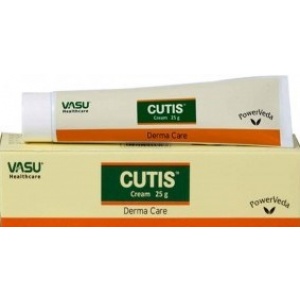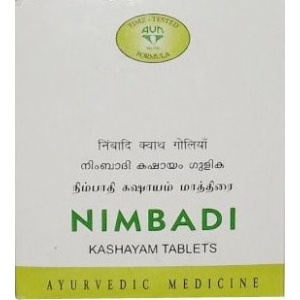Candida
Showing all 2 results
Candidiasis (Colloquially referred to as Fungal infection, Candida, candidiasis, yeast, molds or thrush) is a skin condition caused by opportunistic pathogenic bacteria, particularly of the Candida genus.
What is Candidiasis?
Candidiasis (Colloquially referred to as Candida, candidiasis, or thrush) is a skin condition caused by opportunistic pathogenic bacteria, particularly of the Candida genus. The most commonly occurring one being Candida albicans. This yeast is usually present in healthy human bodies, in small amounts. Sometimes, due to variable reasons their levels might increase, like being immune-compromised, or if there is a shift in the gut flora. Increases Candida levels could lead to infections that could be superficial, such as oral thrush or vaginitis, or Systemic in which the yeast is more proliferant and could be potentially fatal. Systemic candidiasis usually affects the immunocompromised populations, such as individuals suffering from Cancer, AIDS, or post trauma or post surgery patients, etc.
What are the Symptoms of Candida?
Symptoms and severity of a candida infection varies depending on the area affected. Oral candidiasis (Mouth and neck region) is also called Thrush, and its signs and symptoms include Discomort and redness inside the mouth White spots on tongue and inside of mouth Sore throat, usually accompanied by discomfort in swallowing Dry skin and cracking around the corners of the mouth. Thrush is more prevalent in people with compromised immunity; children, elderly, people undergoing chemotherapy or suffering from AIDS, etc. Other types of candidiasis include yeast infections commonly affecting the genital area. It is referred to as Vaginitis (in women), and its symptoms include: Reddish lesions and soreness both inside and outside of the the vaginal area Itchiness White discharge (often clumpy) from the vagina Pain or burning sensation during sexual intercourse Yeast infection can sometimes affect men as well. Symptoms in men include: Reddish rash on the penis Itching or burning sensation, usually on or around the tip of the penis Candida infection could be passed on to a partner through sexual intercourse, both orally and otherwise. Invasive candidiasis invasive candidiasis (candidemia).is when candida infection enters the blood stream. This is a dangerous condition and could lead too possibly fatal concequences. (40-50% mortality rate). Candidemia is attributed to non albicans strains, although eact mode of action and occurance are still not completely understood. One should immediately contact a doctor or go to a hospital if diagnosed with candidemia.
What Causes Candidiasis?
Essentially, candidiasis is caused due to a drop in immunity or a change in your microbial gut flora. Your Gut is a complex ecological environment comprising of millions of ‘friendly’ micro-organisms, and thousands of different species. Changes in temperature, pH, or composition of your bowel could cause drastic shifts in their population dynamics. Factors that affect changes in gut flora: Diet: Well this ones a no-brainer. What you put into your gut, is whats gonna dictate it’s environment right? But how does one know if what you’re eating is affecting you adversely or not? Well, a good way to tell is if your bowel movements are reguar and well formed, you’re probably good. Another good indication is a high craving for sugary foods. Yeast love feeding on sugars, they are the simplest form of food for them to break down. So if you have been excessively craving foods high in sugar off late, chances are tha your candida levels could be on the rise. Antibiotics and prescription drugs: The essential function of antibiotics, is to kill living cells. Not necessarily specific to what they have been prescribed for. Most often or not, these impinge attacks on the friendly bacteria in your gut, causing massive upsets in the delicate ecological balance. Antibiotics also bring down immunity levels (sometimes due to destruction of healthy immune cells). This makes anti-biotics doubly dangerous for making you susceptible to bacterial infections. Similarly, most prescription drugs especially Antacids, NSAIDs, steroids, irth control and other hormonal pills when taken over long periods of time can be debilitating not only to your body but also to ur internal gut environment. Although these drugs can be life saving at times, they are after all synthetic chemicals and recognized by your body as ‘foreign cells’, and treated accordingly. Hormonal Imbalance: Hormonal swings cause an overall imbalance in the body, often affecting stomach health and shifts in the internal environment. This is probably why women are more susceptible to yeast infections during menstruation, menopause, pregnancy, etc. Gastrointestinal issues: Any gastric iddues such as diarrhea, gas, acidity, bloating, etc. is indicative of a change in the intestinal environment. Excessive or elusive digestive fluids such as enzymes, diluents, bile, etc cause changes in pH and temperature, favoring the growth of certain species of micro-flora over others. Yeast generally thrive in alkaline pH and moist conditions. Water: Drinking water, that is high in chlorine kills many gut microbes, giving others a better thrust to proliferate. It is best to drink filtered, and ideally distilled water, free of toxic additives and sufficient in essential minerals. It is also preferable to drink water at room temperature, as opposed to cold water, as colder water (according to Ayurveda) is detrimental to the ‘digestive fire’ in your stomach, which essentially means that it is un-ideal for your digestive fluids to generate and function Alcohol: Alcohol inherently is a toxin, and excessive alcohol in the gut kills bacterial cells, and also affects liver functions. Alcohol is a metabolic byproduct, and as such toxic to cells that produce it, except in the case of Yeast. Alcohol acts as fuel and fodder and helps yeast cels grow and proliferate. You can already see where this is going..Alcohol consumption, if accompanied with plenty of water, an foods than help absorb and minimize its toxicity would help retain a healthy gut flora.
How is Candida Treated?
The first line of treatment for candidiasis is anti-fungals, such as clotrimazole, fluconazole, and topical creams (ketoconazole and nystatin). Flucanzole, the most popularly prescribed antimycotic, is clinically proven to be only 90% effective. Other combative treatments include vaginal suppositories and medicated douches. These could affect the internal environment and lead to other complications further on. For thrush, especially in children German Violet is indicated. Excessive dosage of this antibiotic is known to cause oth and throat ulcers. Essentially, most treatments for yeast are detrimental for your body, because they upset your internal environment, and further damage the ecological balance of healthy microbial flora, which is the causative effect of candidiasis in the first place. Futhermore it could lead to more complications and encourage other pathogenic infections.
Is there a Safe, natural way to treat Candidiasis?
VedHerbs Cadida treatment kit contains a combination of homeopathic tinctures that help boost your immunity and also bring balance to your internal environment. bioenergetic nosodes coax your intestinal lining to be inhospitable to candida albicans, thus rebalancing the gut flora and providing relief. You can contact us to set up a free online consultation with one of our Doctors today, to help you decide an appropriate ine of treatment and suggest home remedies and/or therapies to help you combat your condition better, based on your condition and individual body composition.



